It was the Spring of 1974 when wide-spread panic erupted across the Pacific Northwest of the USA, as college-aged women disappeared at an alarming rate of one a month.
In just six months, six women had been kidnapped and others reported that they had been approached by an attractive man in a sling, who tried to lure them to his brown Volkswagon beetle.
He identified himself simply and directly. Ted.
It was only a matter of time, after police had released a description of this man, that four residents in Seattle named the perpetrator – a clean cut law student named Ted Bundy.
The people who dobbed him in included an ex-girlfriend, a close friend, a co-worker and an old psychology professor, however, much to their horror, police dismissed their claims.
How could a clean-cut law student who had no criminal record be responsible for these crimes?
Thanks to his looks and charming personality, he was often mistaken as being something he wasn’t. In fact, this helped to reel his victims in, escape the law on numerous occasions and saw him kill at least 30 victims across seven states in America.
Bundy once described himself as “the most cold-hearted son of a b – – – – you’ll ever meet,” and his reputation certainly preceded him.
So who is the man that became the most notorious serial killer of the 1970s? And what led him to commit these crimes?
We take a look at the man behind Ted Bundy, whose lawyer called him: “the very definition of heartless evil.”

Ted Bundy once described himself as “the most cold-hearted son of a b – – – – you’ll ever meet”. (Source: Getty)
Who is Ted Bundy?
Theodore Robert Cowell was born on November 24, 1946, in Vermont, USA to Eleanor Louise Cowell and an unknown father.
While Eleanor was his biological mother, he grew up thinking that she was his sister, and was raised by his grandmother and abusive grandfather.
After years of physical abuse, Eleanor and Ted, five, ran away to live with some cousins in Washington; and it was here that Eleanor married Johnny Culpepper Bundy, whom formally adopted Ted, giving him his now infamous, last name.
Much of his childhood is unknown as Ted gave different accounts to different biographers – however, people who remember him from high school have described him as “reasonably well-known and well-liked”.
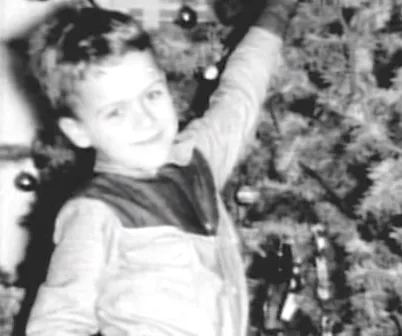
Ted Bundy as a young boy. (Source: Ted Bundy: Conversations with a Killer; The Death Row Interviews)
The first attack
In 1965, Ted graduated high school and after enrolling in one course at the University of Puget Sound, he transferred to the University of Washington.
After dropping out briefly in 1968, he re-enrolled as a psychology major and it was here that it is believed he found out about his actual lineage. His sister was his mother.
Bundy also began dating Elizabeth Kloepfer during this time. She was a divorcee who worked on campus and would later become one of the four people that reported him.
It was also around then that he met and worked with Ann Rule, another of his name-sayer’s (and who would go on to write his biography The Stranger Beside Me), when they worked at Seattle’s suicide hotline crisis centre.
In 1973, he was accepted back into University of Puget Sound, in their Law School, but stopped attending classes soon after.
This is when the first attacks and disappearances began.
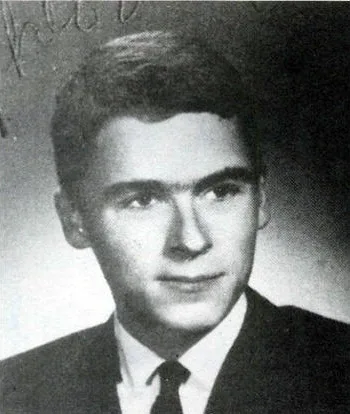
Bundy was accepted into his old university’s law school, but stopped attending classes soon after. (Source: Getty)
While Bundy became known as a serial killer, his first attack wasn’t an actual murder.
In January 4 1974, 18-year-old Karen Sparks (also known as Joni Lenz) was assaulted while she was sleeping at the University of Washington.
Bundy broke into her apartment, and using a metal rod from the frame of her bed, bludgeoned her. Now unconscious, he then sexually assaulted her with the same metal rod, leaving her almost lifeless.
Sparks spent the next 10 days in a coma and was left with permanent, life-long disabilities.
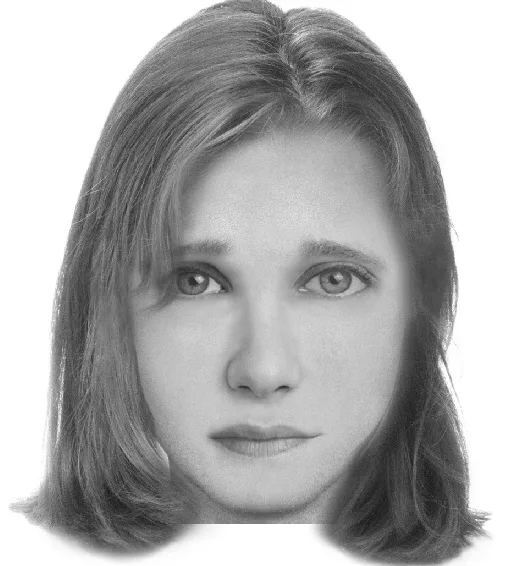
Police released a drawing of Karen Sparks during the trial. (Source: Getty)
Ted Bundy’s murder spree begins
After Karen was brutally attacked, Ted set his sights on his next victim – Lynda Ann Healy, who would also become his first murder.
One month after the assault, he broke into Lynda’s apartment.
Using the same method as he did with Karen, he knocked her unconscious but this time, he clothed her lifeless body and carried her to his car. She was never seen again.
Bundy’s M-O was to target female students, bludgeon them unconscious; bind, rape and kill them before dumping their bodies in remote location.
In some cases, he would decapitate the bodies, sleep with them and keep their skulls in his apartment as momentos.

In 1974, Lynda Ann Healy became Bundy’s first murder victim.
In an interview after his capture, Bundy said: “The ultimate possession was, in fact, the taking of the life. And then purely, the physical possession of the remains.”
“Murder is not just a crime of lust or violence,” he added.
“It becomes possession. They are part of you … [the victim] becomes a part of you, and you [two] are forever one … and the grounds where you kill them or leave them become sacred to you, and you will always be drawn back to them.”

Lisa Williams visiting the grave of her best friend Kimberly Leach, who was a victim of serial killer Ted Bundy. (Source: Getty)
In the five months that followed, Bundy murdered five more women: Donna Gail Manson, Susan Elaine Rancourt, Roberta Kathleen Parks, Brenda Carol Ball, and Georgann Hawkins.
Police, responding to the disappearances, called in back up to find the missing college student. But little did they know, Bundy was working for one of the services they enlisted.
At the time, he worked for the State Department of Emergency Services, arising no suspicion and even dating a twice-divorced mother-of-two, Carole Anne Boone.
The couple would date for two years, as he continued his murder spree. She would later become Bundy’s wife, giving him a child.

Carole Ann Boone dated Bundy during his murder spree and then he got married.
Bundy’s capture
As bodies were being unearthed and the hunt continued, Bundy was accepted into law school in Utah – so he accepted and relocated.
While he continued his murder spree in Utah, his identity was being slowly but surely being revealed in Washington and it was here that a police sketch of his face was revealed.
“Police urge young women to be extremely cautious…” a local Washington newspaper read.
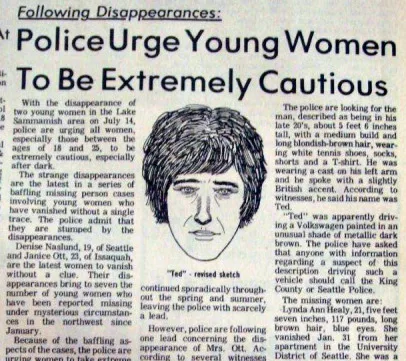
“Police urge young women to be extremely cautious…” the newspaper read.
Upon hearing that his murder spree had now gone interstate, Bundy’s former girlfriend Elizabeth Kloepfer, called the police once again.
It was only then that he became a prime suspect in the multiple murder case files.
Even though Bundy had become a person of interest, this did not deter him from attacking more women.
In fact, he would even journey from his home in Utah, to Colorado which was 458km away and here, he killed more women.
In August 1975, nearly two years after the first murder, Bundy was pulled over by police, who found masks, handcuffs, and blunt objects inside his car.
While it was not enough evidence to arrest him, he was put under surveillance.
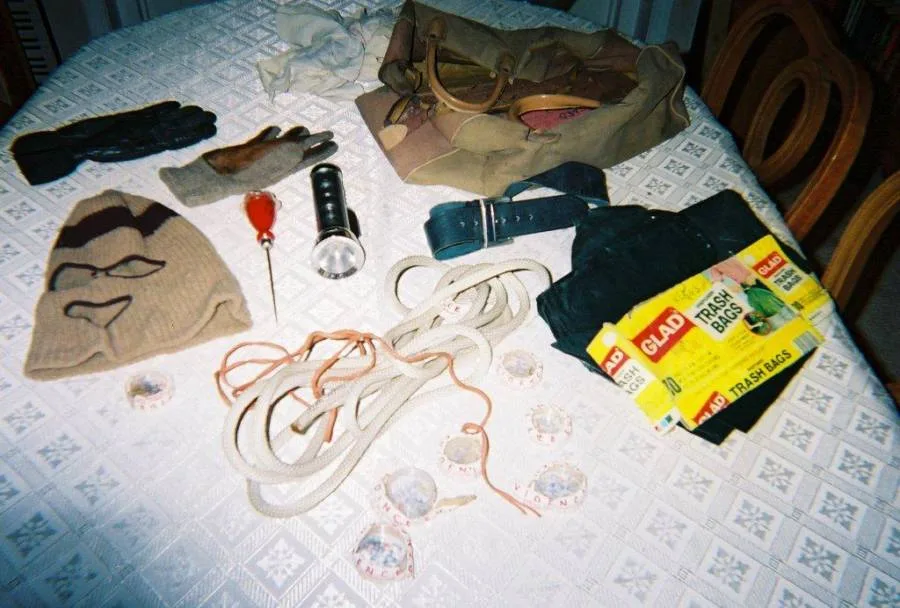
Bundy was pulled over by police, who found masks, handcuffs, and blunt objects inside his car. (Source: The Bundy Murders: A Comprehensive History)
Police then found his old Volkswagon beetle, which he had since sold, with damning evidence against him – hair matching three victims.
He was placed in a lineup and identified by a woman who had managed to escape his clutches.
Bundy was convicted of kidnapping and assault and then sent to prison while police continued to build their cases against him.
Bundy’s criminal trial and his escapes from prison
Unfortunately, being held in prison would not deter, nor stop his murder spree. In fact, Bundy, would escape twice while in police custody.
In 1977, Bundy was acting as his own lawyer during his trial, and had been let into a law library in Colorado without handcuffs. He managed to escape and was on the run for six days before being recaptured.
In January 1978, he managed to escape again. This time through a hole in the ceiling he had created. He managed to make it all the way to Florida, where his killing spree continued.
Within 15 minutes of entering Chi Omega sorority house on the Florida State University campus, he assaulted and killed two more women – Margaret Bowman and Lisa Levy.
Two other women, Kathy Kleiner and Karen Chandler both escaped, but suffered horrific injuries.
Almost a month later, Bundy kidnapped and murdered 12-year-old Kimberly Diane Leach and a week later he was captured by police for the last time.
On the way to jail, he told police officer who had arrested him.
“I wish you had killed me,” he said.
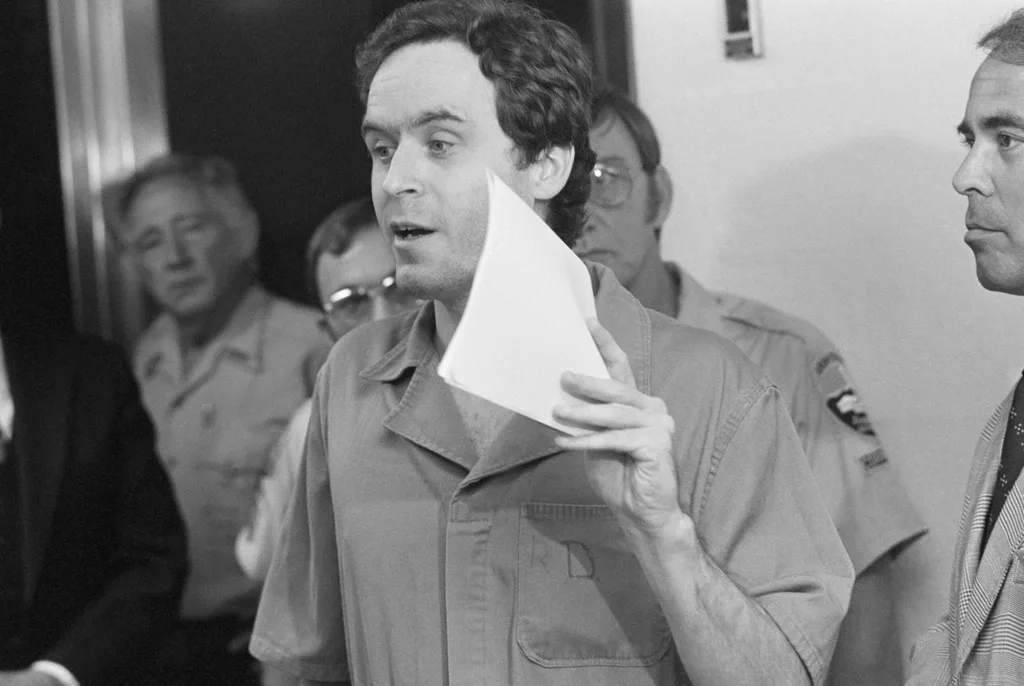
Ted Bundy defended himself during his trial. (Source: Getty)
Execution
Ted ultimately sabotaged his own case by choosing to defend himself.
After ultimately being convicted, he was placed on death row at Florida’s Raiford Prison where he was abused by other inmates.
On January 24, 1989, Ted Bundy was executed by electric chair with hundreds gathering to celebrate his death.
To this day, the complete victim count remains unknown, however, he is said to have killed between 30 and 40 women.
He remains one of the most notorious serial killers in history.

The body of Theodore ‘Ted’ Bundy is taken to the Alachua County Medical Examiner’s office following his execution at 7:16 a.m. Bundy was executed for the murder of Kimberly Leach of Lake City. (Source: Getty)
Netflix has announced a new docu-series titled Conversations with a Killer: The Ted Bundy Tapes. The four-episode series will feature never-before-heard audio interviews with Ted Bundy on death row. The series will launch on January 24 2019 — exactly 30 years after the date of his execution in Florida.

Netflix’ new docu-series, Conversations with a Killer: The Ted Bundy Tapes, will launch on January 24, 2019.



